“The Brain – is wider than the Sky –
For – put them side by side –
The one the other will contain
With ease – and You – beside”
–Emily Dickinson
How do we perceive our Oregon landscapes – the visual grandeur of a Strawberry Mountain trail, the crisp smells of cut Douglas fir and ponderosa pine in state and private forests, the tart sweetness of marionberries from Portland back alleys, the crashing of waves off Brookings or Cannon Beach? What about the memories that these landscapes provoke, the attention they attract, and the plans we start considering in response? How does this happen? And how does it relate to our personal experience of art – and craft beer?

Our brains, of course, are landscapes themselves, with billions of linked cells (neurons) and trillions of synaptic connections electro-chemically routing information about what we detect with our own eyes, ears, fingertips, guts – and noses – along neural networks developed from experience, and essential for our rich perceptual appreciation of this bountiful state we call home…
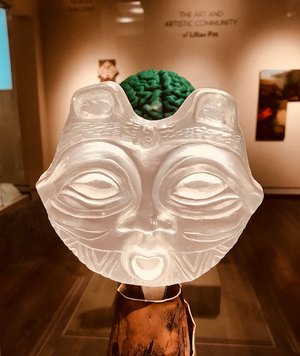
LEARN MORE: “She Who Watches” (“Tsagaglalal”)
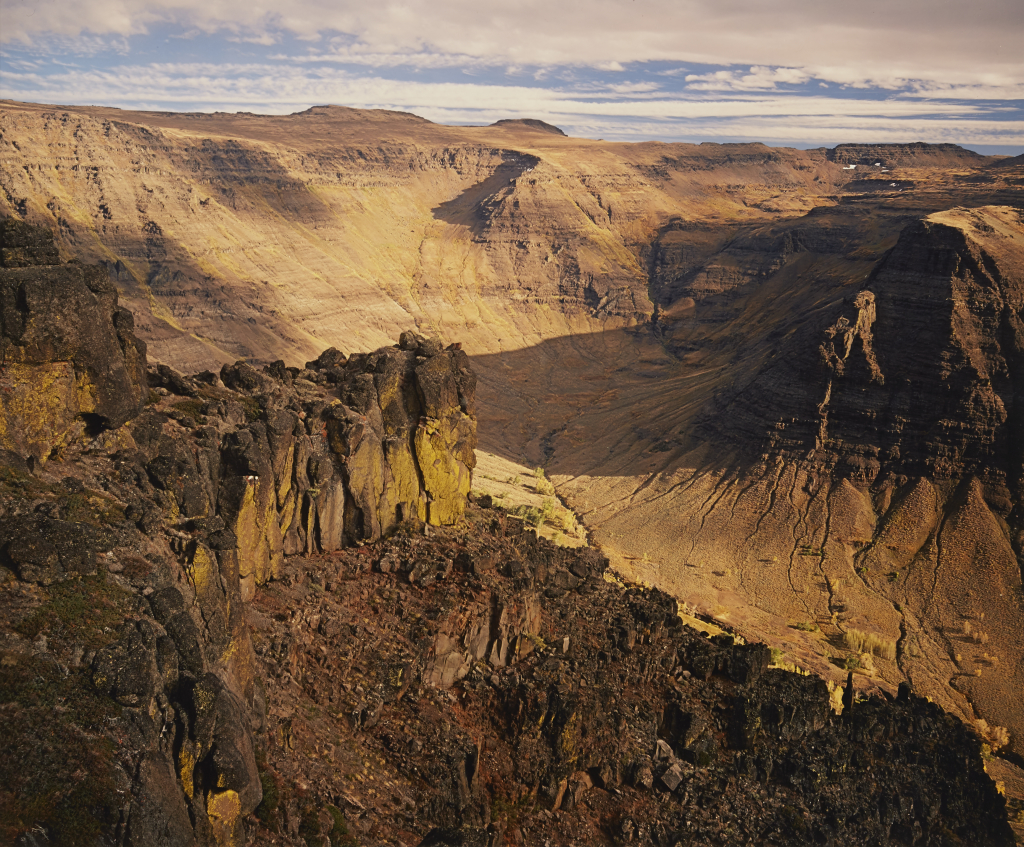
Ron Cronin (American, born 1945), Big Indian Gorge, Steens Mountain, Oregon, 1999, chromogenic print, Gift of the Artist, © Portland Art Museum, 2001.22

Cyrus Fulton, Loading Ship, ca. 1935, oil on canvas, Gift of Michael Parsons and Marte Lamb, © artist or other rights holder, 2004.91.1
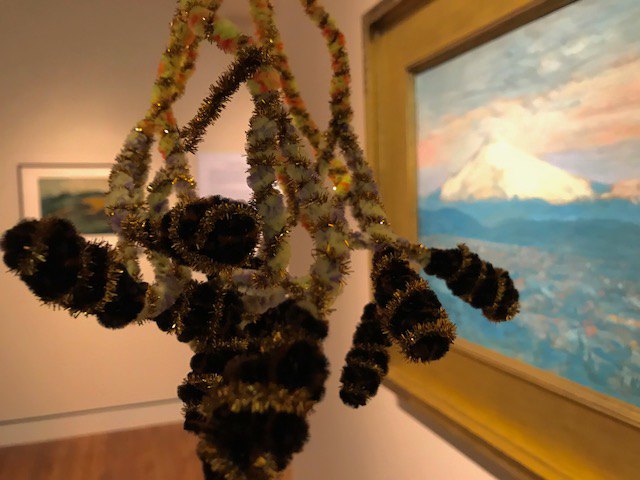
The Portland Art Museum, founded in 1892, is an extraordinary partner in furthering education about both neuroscience and art. Noggin collaborated with PAM on the popular “Seeing Nature” exhibit in 2015, and PAM co-sponsored our “Briefing with Brains & Art” for the U.S. House of Representatives in 2016. We are thrilled and honored to welcome them back as co-sponsors for a new Noggin briefing in Congress later this month!

LEARN MORE: The Nature of Seeing @ the Portland Art Museum
LEARN MORE: The Nature of Seeing: Noggins and Art
LEARN MORE: In Dialogue with Art and Drugs @ PAM
LEARN MORE: STEAMing to DC!
LEARN MORE: Jeff Leake Joins Teacher Advisory Council @ PAM!
LEARN MORE: NW Noggins Bring #brains2DC!
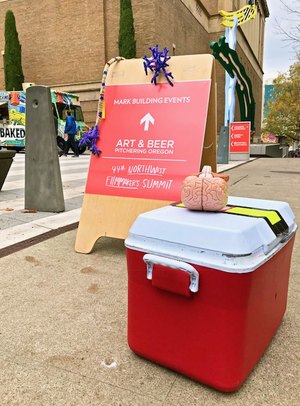
That’s not beer in the cooler… 🙂
We brought our noggins to the museum this weekend as guests of Kristin Bayans, the Manager of Interpretive Media, to explore a compelling exhibit called Picturing Oregon. Our state is home to a wide range of sublime and dramatic landscapes, and has long attracted artists, whose works are on display though August 2019!

We were there to discuss smell (olfaction), and its influence on brain networks which underlie perception, emotional response and memory, as part of a “Pitchering Oregon” event, where 18 craft brewers from around the state paired brews with specific landscape works in the collection…
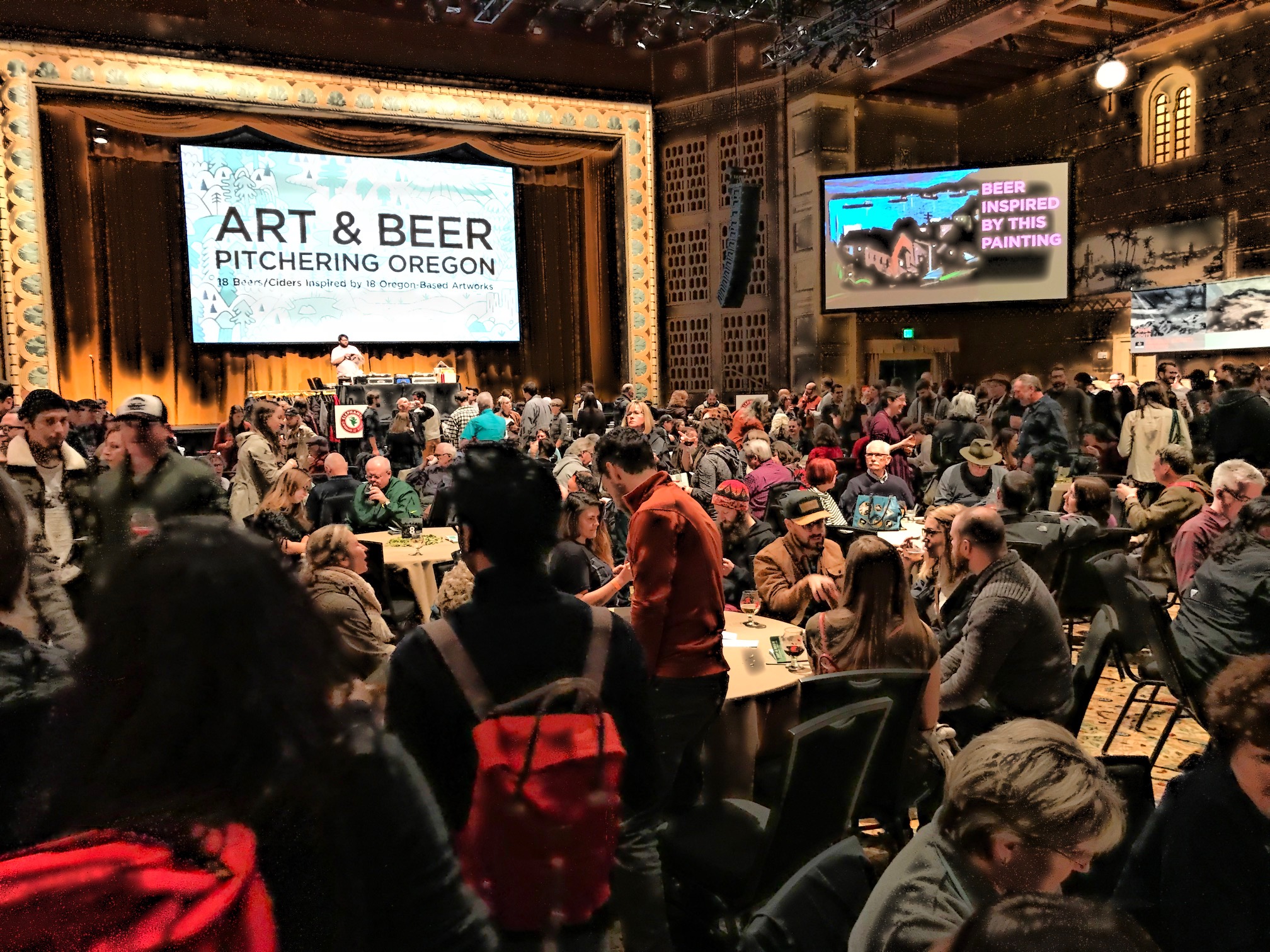

Ted Smith and Kristin Bayans holding some brains
We created a short guide to olfaction, and presented along with Kristin on how smell in particular can influence emotion, memory and perception, while passing around bags of spruce and pine, sagebrush and fir, and imagining landscapes depicted in three works…

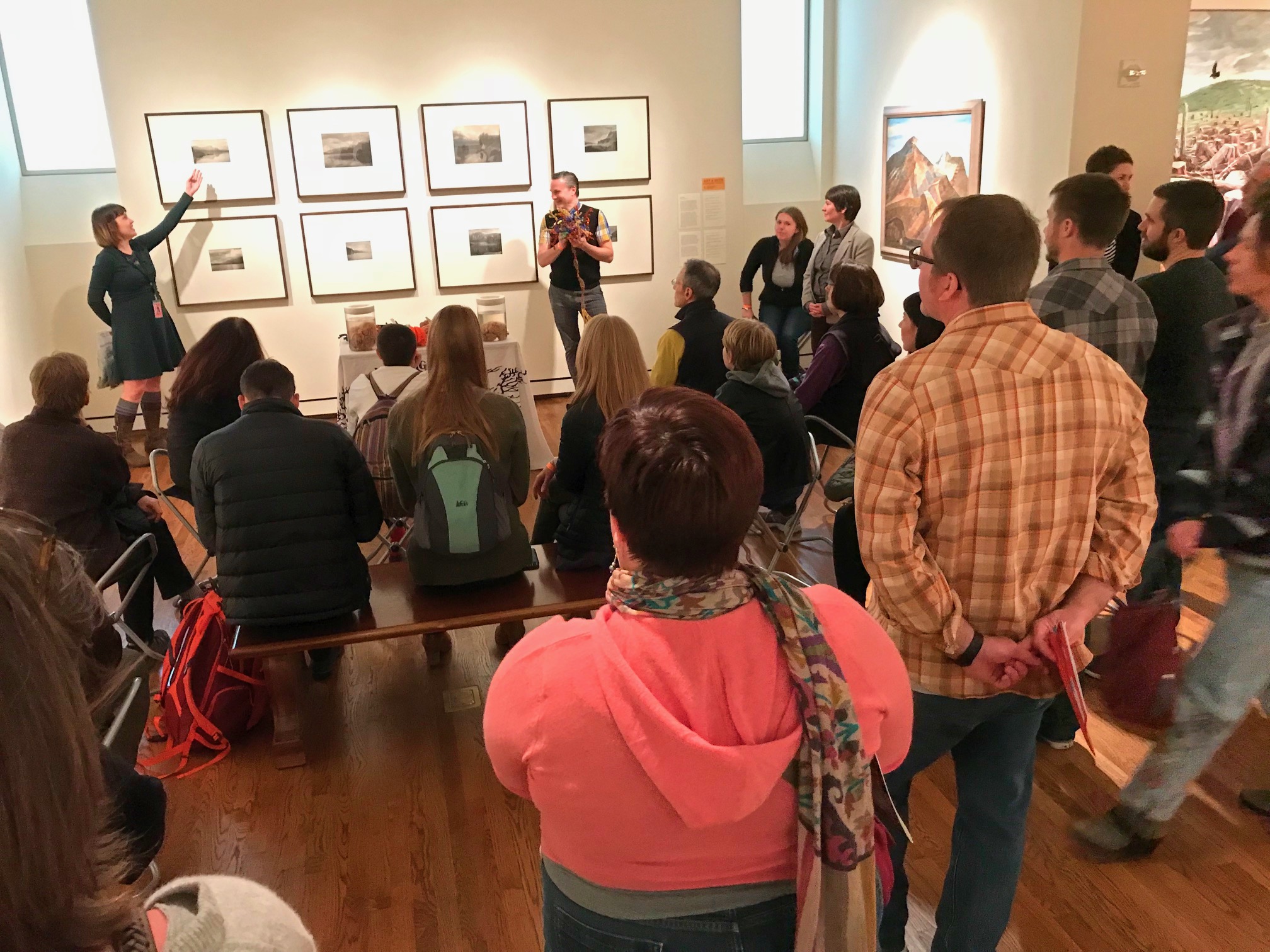
LEARN MORE: Olfactory booklet
What is smell?
Take a deep breath. Stuff is made of smaller pieces, and you just inhaled them through your nose. These pieces are molecules, and they are released from foods, surfaces, plants, trees, dogs, bodies, and that delicious pint of beer in your hands.
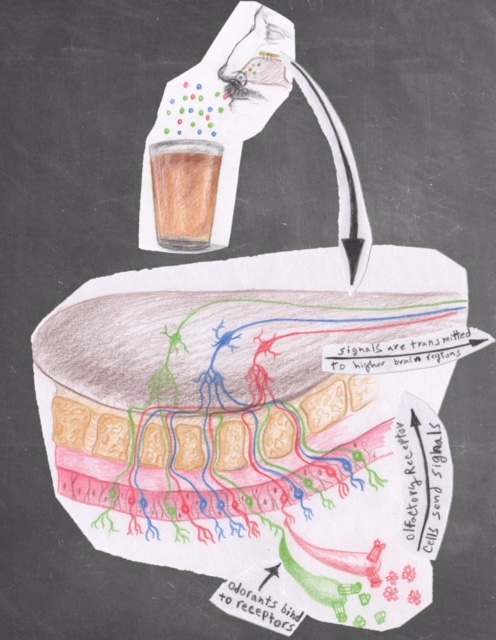
Up your nose is a hidden cavity, where special cells called odorant receptors grab specific molecules and respond by sending electricity directly into your brain! These cells stick their hair-like processes through the ceiling of the nasal cavity to bind molecules, and send more wire-like projections through holes in the bone below your brain to carry the currents.
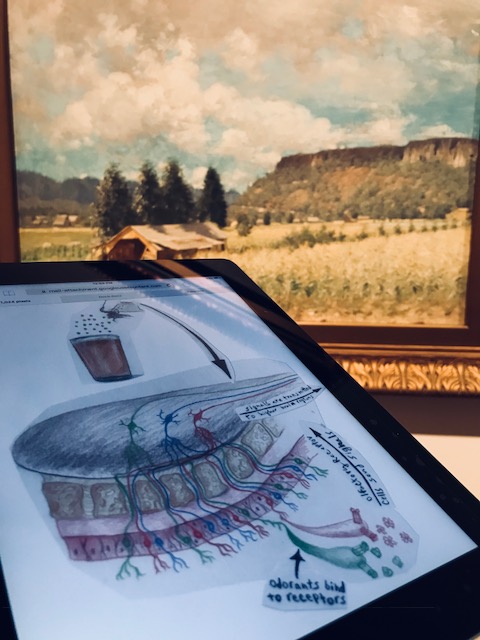
By breathing in, you’ve started an informative volley of impulses that will travel to specific areas of your brain to make you respond emotionally, call up related memories, and consciously perceive qualities of the smell…
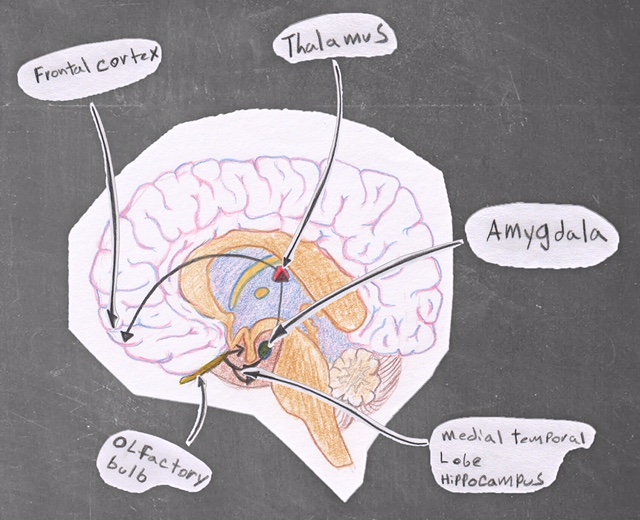
These areas include the amygdala, which generates emotional changes in your body, and areas around the hippocampus (in your medial temporal lobes), which are critical for memory. Input from odor receptors is also integrated with your other senses, including taste, touch, hearing and vision, in complex neural networks in your frontal lobes…

We asked: How does all of this affect your experience when looking at the art?

Visitors recalled specific memories, heard birdsong and log trucks, smelled spruce, pine, sagebrush and mosses, detected warmth and cool breezes, felt longing, loss, familiarity, inspiration and awe, and pondered the relationship between their physical environment (both external and internal) and their detailed, visceral, conscious experiences of the art we discussed…



From de Garde Brewing (Tillamook)…
“We created a highly composed blended beer to contrast positively with the desolation in our painting. By incorporating the vibrancy of the natural rejuvenation of the forest through its new physical growth (spruce tips), the beer expresses the dynamic future inherent in our work. Additionally, by incorporating desiccated and aged hops early in the brewery process and freshly picked hops at the end, we hope to further represent the same transition and potential.”
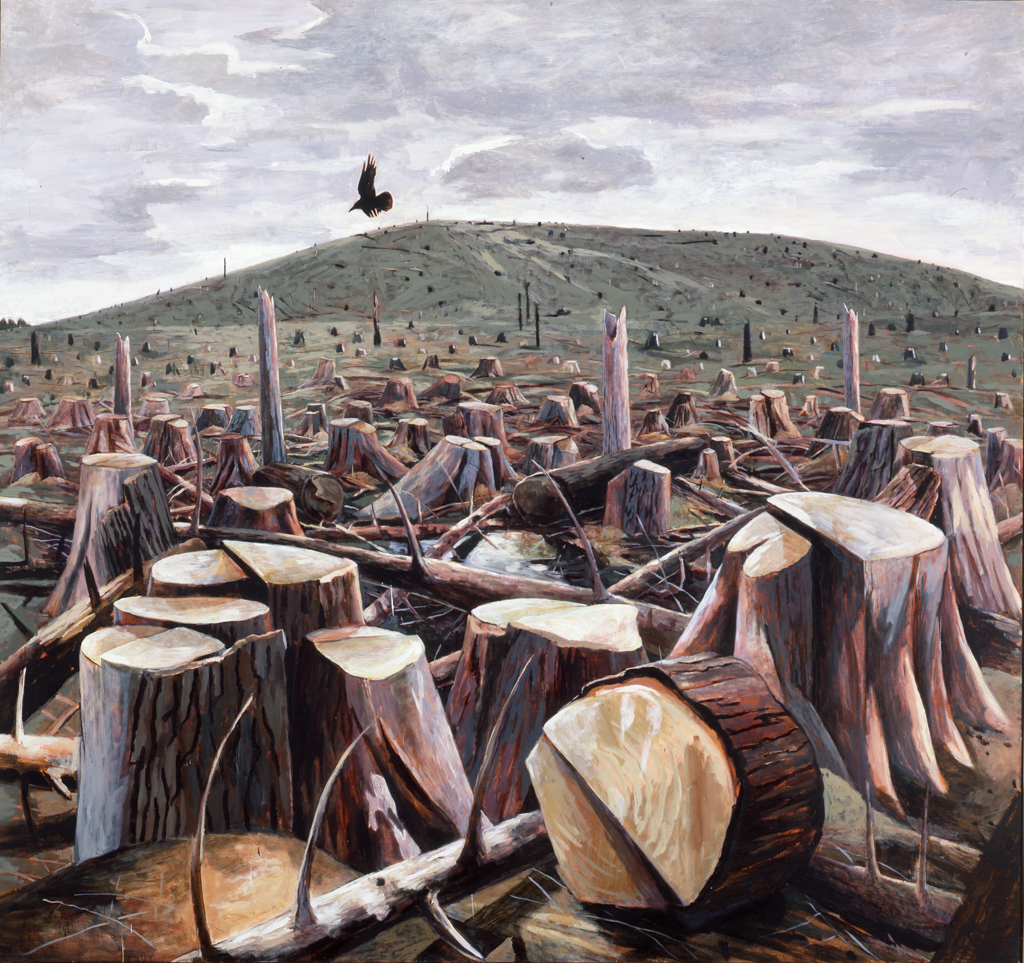
Michael Brophy (American, born 1960), Harvest, 1995, oil on canvas, Gift of Laura Russo and Lucinda Parker, © Michael Brophy and The Laura Russo Gallery, 1995.32


From Pfriem Family Brewers (Hood River)…
“The photo is an iconic representation of the magic place we call home, in the Columbia River Gorge. A Pre-Prohibition lager fits perfectly into the era during which this photo was taken, at the turn of the 20th century, and it would make a great easy-drinking beer after a day on the river. We used Mecca Grande Pelton from Madras, 6-row pilsner malt and flaked rice.”
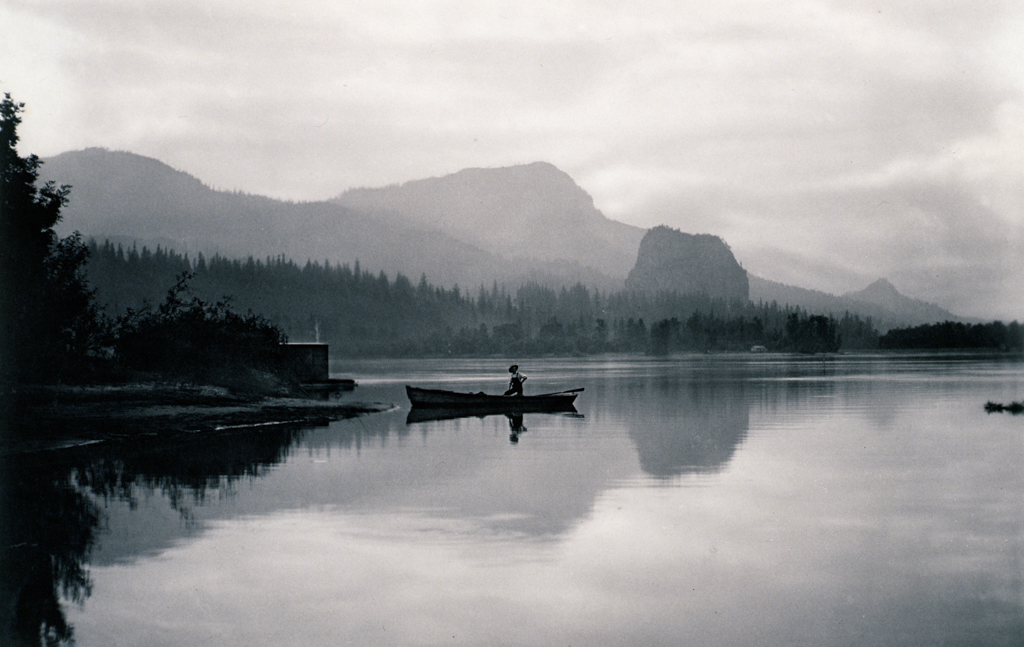
Lily E. White (American, 1865-1944), Evening on the Columbia, 1903/1905, platinum print, Museum Purchase: Caroline Ladd Pratt Fund, no known copyright restrictions, 91.22.1
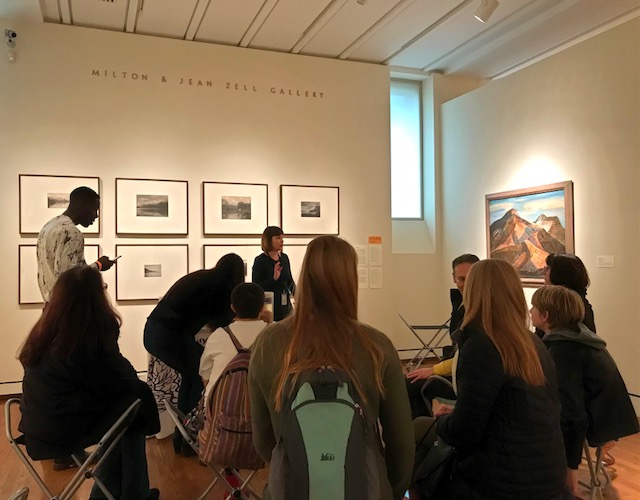


We asked: As you taste these different beers, pay attention to the aromas, notes of flavor, and presentation. What image in the show would you pair these with?

From Standing Stone Brewing (Medford)…
“Table Rock made me think about table beers, which were commonly available in Belgium. While the sky in the painting is cloudy the lower third has a feeling of brightness. It’s as if the sun is shining behind the viewer while clouds roll in from the opposite direction. The beer’s bright golden color represents this brightness. Berliner Weiss is traditionally served with a fruit or herbal syrup. The beer becomes cloudy when you add syrup and takes on the painting’s color schemes depending on which syrup you add.”

Frank Vincent DuMond (American, 1865-1951), Sketch of Table Rock Near Medford, 1911, oil on canvas, Gift of 52 subscribers, © artist or other rights holder, 13.9

We also felt lucky to spend an entire afternoon immersed in landscapes at the Picturing Oregon exhibit! A recent Noggin/Velo Cult presentation by artist Sienna Morris and OHSU graduate student Brittany Alperin included research suggesting beneficial effects of viewing natural landscapes (“forest bathing”), which can reduce blood pressure, lower stress hormone levels and decrease symptoms of anxiety and depression…
LEARN MORE: Bathing your brain @ Velo
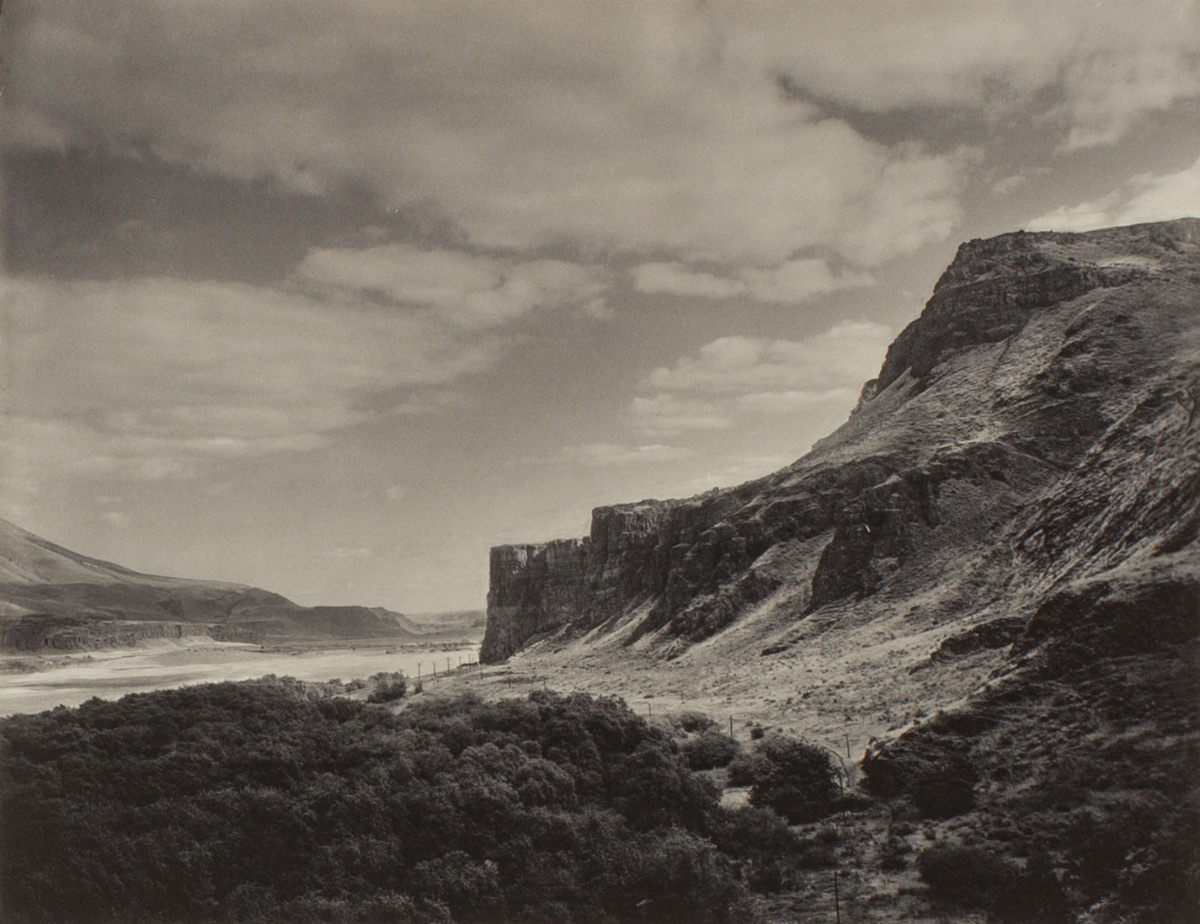
Lily E. White, Upper Cape Horn, 1903/1905, platinum print, Museum Purchase: Portland Art Museum Volunteer Art Council and Ann Swindells in honor of Joyce Anicker, public domain, 1997.2.5



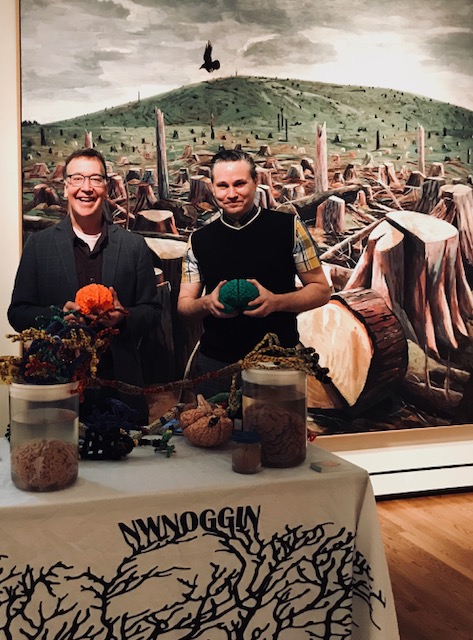
Fill with mingled cream and amber,
I will drain that glass again
Such hilarious visions clamber through the chambers of my brain. Quaintest thoughts — queerest fancies, Come to life and fade away:
What care I how time advances? I am drinking ale today.
— Edgar Allan Poe



